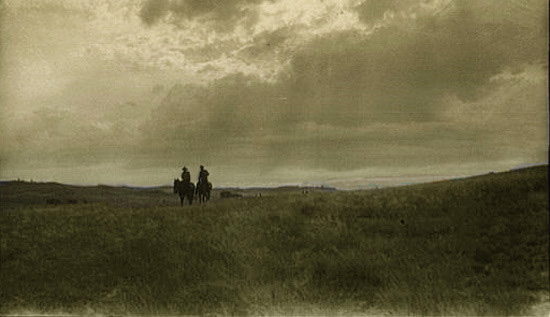
Quarter Circle U Cowboys on Roundup, 1939
The Quarter Circle U, located a few miles from the Three Circle near Birney, has remained in the
same family for over a century. The ranch traces its beginnings to George Warren Brewster (1857-1912) who made case entry in 1892 and proved up
homestead in 1899. Brewster, originally from Massachusetts, wandered into the area of the Upper Tongue seeking
Buffalo. The last confirmed sighting of bison in the area was by famed Miles City photographer L. A. Huffman in
July of 1887.
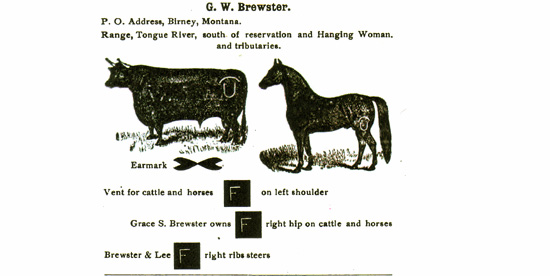
Quarter Circle U Brands, 1903
Brewster served in the Montana Legislature in 1905. Prior to accompanying Three Circle cowboys on their
roundup into the Custer National Forest, Rothstein traced the day-to-day activities of Quarter Circle U cowboys on
their roundup into Big Horn County, Montana. At the time of Rothstein's visit, the ranch was owned by
the Brewster Arnold Ranch Co., owned by descendants of George W. Brewster.
Until the advent of the Second Boer War (1899-1902) and the Spanish-American War, ranches along
the Upper Tongue were dependent upon the vagaries of the cattle industry. Nearby Sheridan became the principal recruiting
station for acquisition of horses for Lord Roberts' Army. Malcolm and William Moncreiffe's Quarter Circle A at Big Horn, Wyoming, became
the major source of horses which brought $60.00 to $80.00 each. During the war, the Moncreiffe brothers provided
the British Government with over 22,000 horses. Horses were obtained from all of the ranches along the Upper Tongue and from as
far away as Washington State and Oregon. The British government required that the horses be
"saddle ready." Breaking the horses was thus a hit or miss affair, prompting Theodore Roosevelt's alleged comment that
the horses would kill more of the British than the Boers.
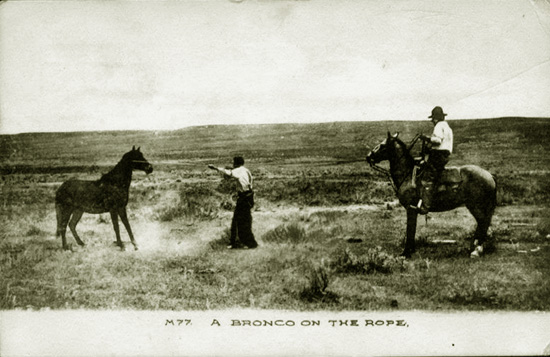
Bronco on the Rope, Photo by C. E. Morris, approx. 1910.
A return to cattle following the war proved to be disappointing.
A severe winter in 1912 proved to be devastating to ranchers along the Tongue who depended on leases in the
Custer National Forest. The Spear Cattle Company of Big Horn, Wyoming, leased some 1,250,000 acres
of land and by 1911 ran some 58,000 head of cattle. In 1911,
the Spear Cattle Company branded some 6,500 calves. The winter of 1912 was unusually bad. They lost some
10,000 head and the following spring branded only an estimated 2,200 calves. The ranches along the
Upper Tongue were saved from financial ruin by the American Army's remount campaign and by demand
for horses brought about by World War I. Indeed, both the British and American Armies continued mounted cavalry until
World War II. The last British cavalry charge was in 1942, against the Japanese in Burma and the last American
cavalry charge was on January 16, 1942, against the Japanese in the Phillippines.
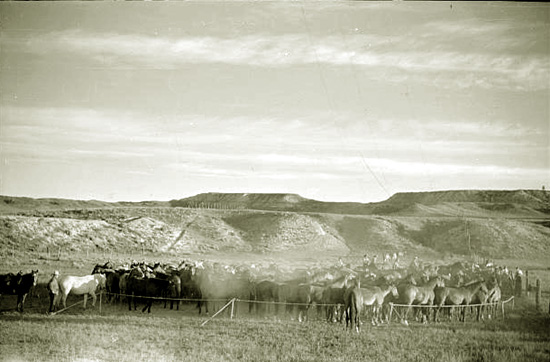
Quarter Circle U Remuda, 1939, note the rope corral.
The end of World War I proved to be ruinous to ranchers along the Upper Tongue. Peace eliminated demands by the military for
horses. Civilian use of horses was eliminated by motor cars and motor trucks. Increasingly,
ranchers such as the Three Circle and the Quarter Circle U turned to the wrangling of dudes to provide supplemental
income.
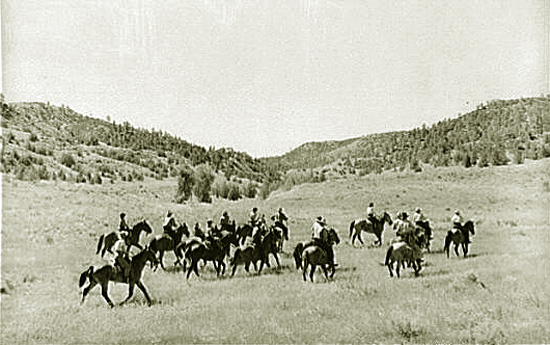
A herd of Quarter Circle U dudes, Photo by Arthur Rothstein, 1939.
The first dude ranch in the area was the Eaton Dude Ranch at Wolf, Wyoming. Two cowboys Irving Alderson, Sr. and Allen Alderson, working for the Eatons, were insprired
to add facilities for dudes at their own ranch on Hanging Woman Creek near Birney. A third brother, Floyd, worked for the
Three Circle. Floyd was rather thin and acquired the nickname "Skin and Bones." To differentiate Irv and
Allen, Irv became known as "Little Bones" and Allen "Big Bones."
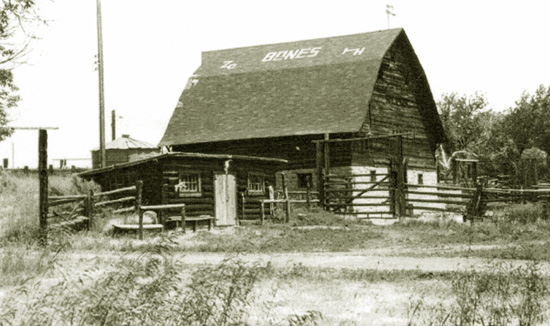
Horse Barn, Bones Brothers Ranch.
The roof of the barn displays the ranch's brands, a Z C and Lazy T H Connected. The barn was constructed
about 1923 with the additon of facilities for dudes. The ranch ultimately had accommodations for
90 guest.
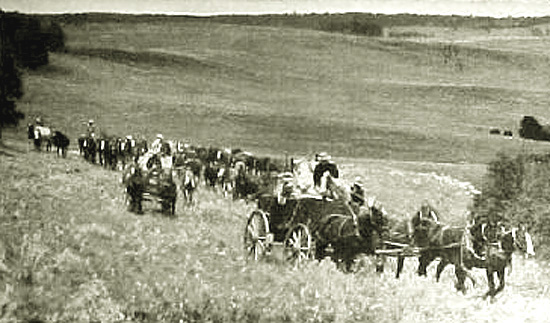
Bones Brothers Roundup, approx. 1930.
The primary business of the Bones Brothers remained, however, as a working ranch. It continued
hosting dudes until the 1960's
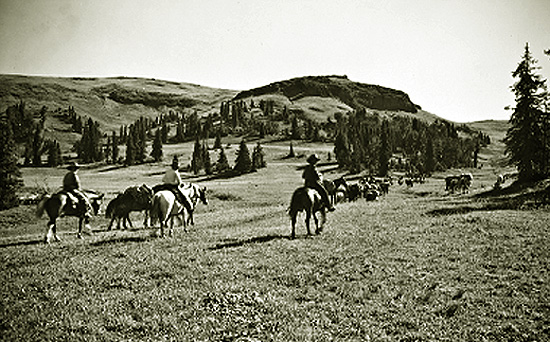
Bones Brothers Dude Pack Train, 1930's.
Music this page: I Ride an Old Paint
Next page: Quarter Circle U continued.
|